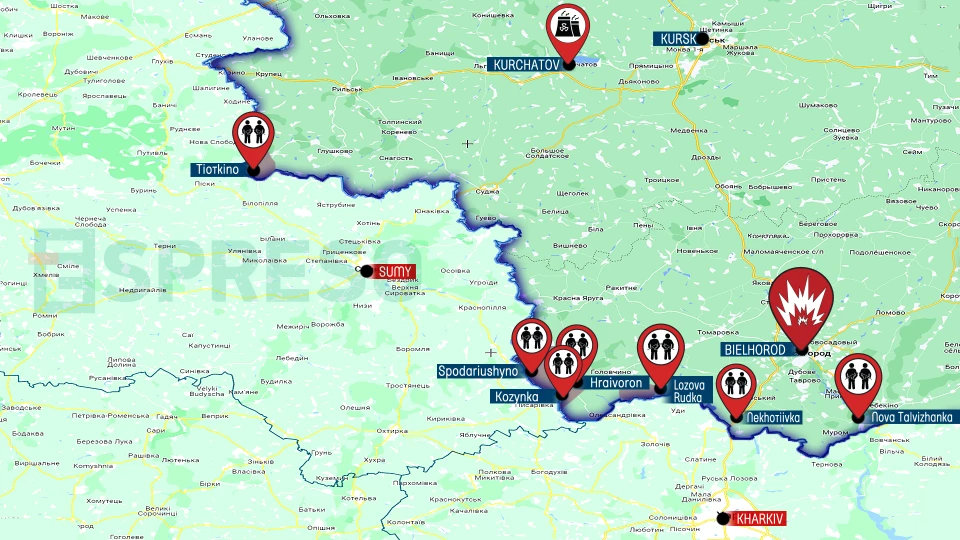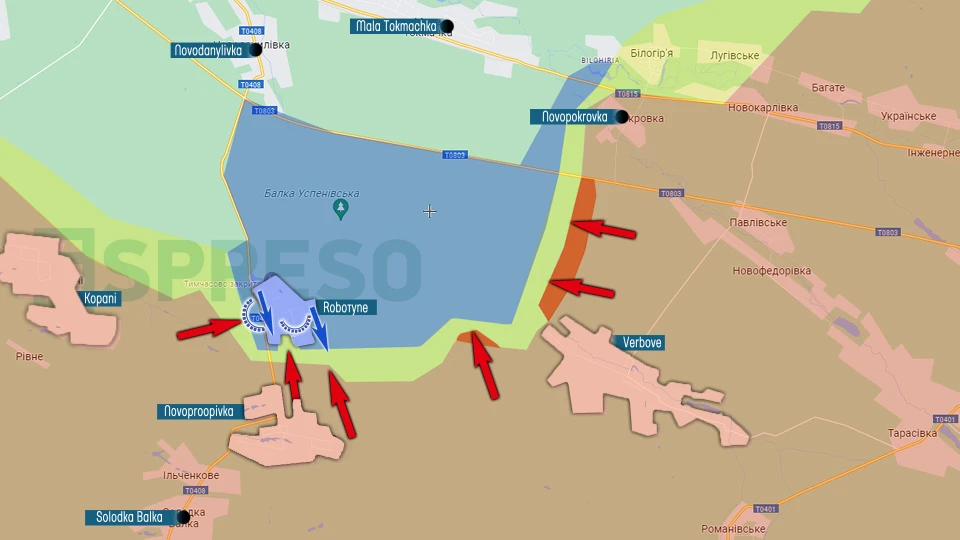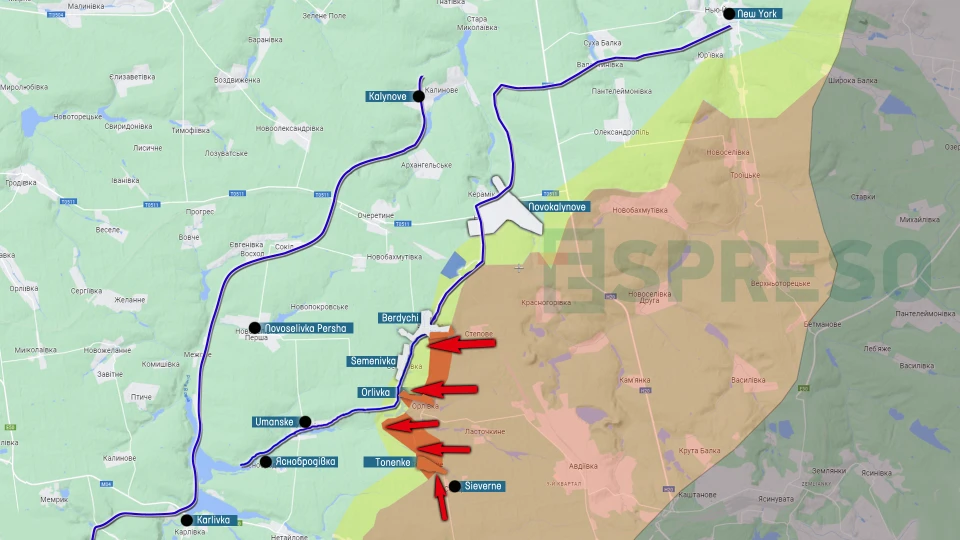
Largest missile attack. Combined arms operation on Russian territory. Weekly military results by Serhiy Zgurets
On the night of March 22, Russia launched its largest attack on Ukraine this year. It was a combined attack of 151 air targets. Russia focused its efforts on Ukraine's energy facilities
The largest attack on Ukrainian energy sector
Russia has been launching missile attacks for the second day in a row. Yesterday's attack was the second most powerful in the entire period of the full-scale invasion. About 20 power generating facilities were damaged. Dnipro hydroelectric power plant suffered the most. At least 8 rockets were fired at the hydroelectric power plant. The machine stations of HPP-1 and HPP-2 were damaged.
The structure itself, as an engineering structure, is quite powerful. Inflicting damage and fully penetrating the dam with isolated missile strikes is difficult. The structure has retained its strength, but it is not operational yet. Currently, the extent of the damage is being assessed. Predicting whether the enemy will resume attacks on this object is difficult. It is likely that some air defense assets will be redeployed to cover this dam. Million-strong cities are the first priority for air defense systems, but the problem lies in density. Cities like Odesa, Zaporizhzhia, and Dnipro currently have lower population density, which the enemy exploits by deploying a significant number of cruise and ballistic missiles.
The threat of a repeat attack looms, prompting discussions on strengthening air defense systems, a topic that has been repeatedly raised at various international meetings. In particular, the meeting of the Contact Group on Defense of Ukraine in the 'Ramstein' format on March 19 was dedicated to air defense systems. Ukraine was promised more missiles for its anti-aircraft missile systems. The destruction of bombers, the carriers of missile weapons used by the enemy to strike Ukrainian energy facilities, is a topic that needs constant reminder. After all, Russia poses a threat not only to Ukraine but to the entire Europe. The issue of Taurus and other aviation weapons of American production should also be high on the agenda. As risks escalate, there must be a response.
US urges Ukraine to stop attacks on refineries
Yesterday, a publication appeared in the Financial Times stating that the American side urged Ukraine to cease attacks on Russian energy infrastructure and oil refineries, as they could lead to an increase in oil prices and, consequently, affect Biden's electoral positions in the US. There are no references to officials in the article. At least two rebuttals from the Ukrainian side were reported today, stating that no forms of pressure on Ukraine were being exerted.
Deputy Prime Minister for European and Euro-Atlantic Integration Olha Stefanishyna, speaking at the Kyiv Security Forum, stated that Ukraine is acting in accordance with NATO concepts. When at the beginning of the war the Ukrainian side asked for the sky to be covered, it was said that this would not make sense. Allegedly, it is necessary to destroy the bases of Russian aircraft on the territory of the Russian Federation, as this is a more conceptual approach. Currently, strikes on oil refineries, processing plants form the basis for reducing the economic and military potential of the Russian Federation. This is what Ukraine can do, in accordance with the requirements of the UN and the right of a state to self-defense.
Russian volunteers' operation is part of a long-term offensive
Russian volunteers from the Legion of Freedom of Russia, the Russian Volunteer Corps and the Siberian Battalion initially perceived the actions as raids that would last for a week. But now it has turned into a kind of joint military operation involving the aviation component and artillery on both sides. This is an element of our long-term offensive, no matter how loud it may sound. After all, these actions of Russian volunteers have led to a certain regrouping of Russian forces.

Part of the West group, including 30 thousand personnel, is located in Belgorod, Bryansk and Kursk regions. The other 80 thousand are concentrated in the direction of Kupyansk-Svatove-Kreminna. Thus, the dynamics there are not active at all. Part of the Russian troops' efforts are forced to stretch along the border of Kursk and Belgorod regions.
Russian settlements are being completely destroyed by Russian aviation. This is the first time that Russians have used guided bombs and other weapons to destroy their villages. The Russian volunteers are now being confronted by border guards, the Russian Guard, conscripts and a part of the Russian Army's West troop group.
Therefore, the deployment of Russian forces in this sector of the border aligns entirely with our concept, aiming to prevent the use of those same forces in Kupyansk and Svatove, or to complicate the accumulation of reserves for other directions.
Frontline situation
In a conversation with his French counterpart, Ukrainian Armed Forces Commander-in-Chief Oleksandr Syrskyi said that stabilization was taking place on the front line. This is likely to be the advance of Russian troops. There are no major changes at the front, except in certain areas, such as Robotyne and Verbove. There is a slight advance of the Russian troops northwest of Verbove. This area remains difficult. There are counterattacks from both sides.

The Russian forces will focus on the situation around Avdiivka. There are two defense lines to the west of Avdiivka. Despite the enemy's pressure, the area around Berdychi, Orlivka, Novoselivske, and further north remains in extremely unfavorable conditions.

Yesterday, at the Kyiv Security Forum, the commander of the Third Separate Assault Brigade of the Ukrainian Army, Andriy Biletskyi, said that if we removed the threat of the enemy using aircraft with UAVs and increased the number of artillery per kilometer of the front, we could hold Avdiivka. Now it is extremely difficult to hold the entire section of the front where the 3rd Brigade is located. But in these conditions, having an advantage in manpower, equipment, and artillery, the Russian army has no advance. Even if this section of the front is inconvenient and we move to other prepared lines, the main task of the Ukrainian Armed Forces will continue to be the destruction of enemy manpower.
- News














































